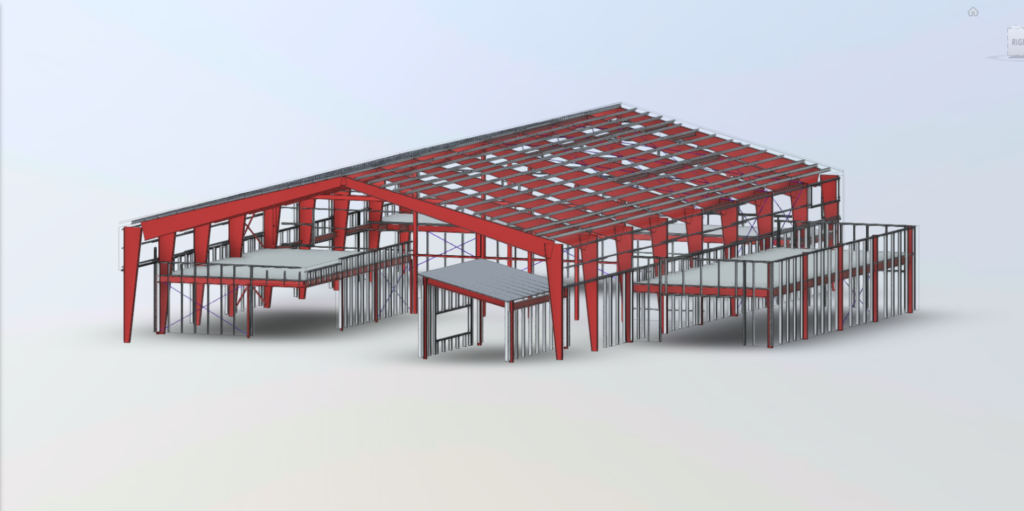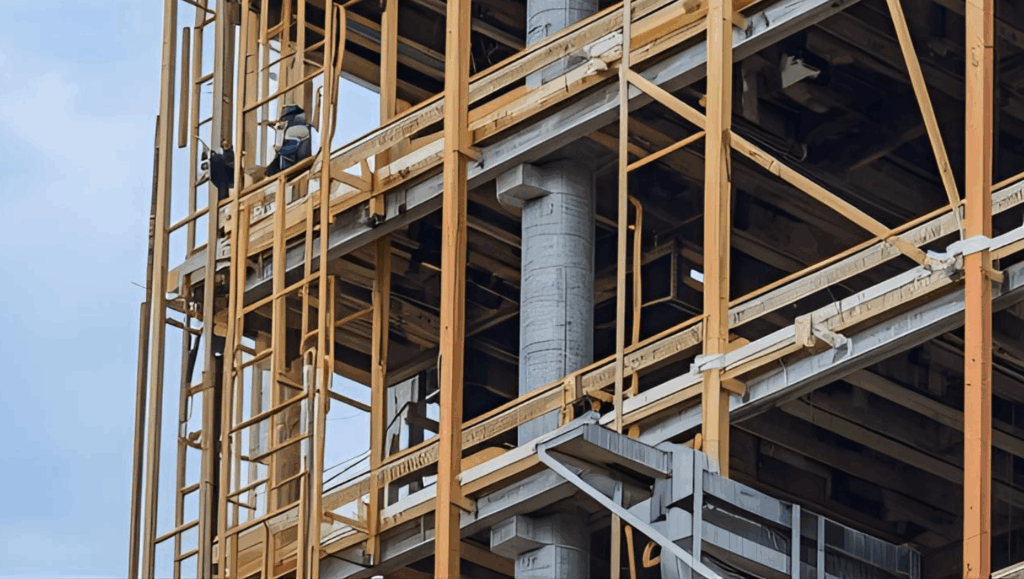The Definitive Guide to Metal Building Construction: Types and Classifications
Metal buildings have become increasingly popular in the construction industry due to their durability, cost efficiency, and versatility. Understanding the various types and classifications of metal building construction is crucial for architects, builders, and anyone interested in this innovative approach to construction. In this comprehensive guide, we will explore the classification of most metal buildings, delve into the differences between Type 1 and Type 2 construction, discuss the three main types of metal construction, and provide a real world example of Type 3 construction. Conduct a thorough survey of the land to determine if a Site Remediation and Preparation is required before you proceed with the construction. For businesses investing in metal building projects, Equipment Finance Canada provides tailored financing solutions to acquire the necessary equipment while maintaining financial flexibility.

Classifications of Metal Buildings
Question 1: What classification do most metal buildings fall under?
Most metal buildings fall under the classification of non-combustible construction. This means that the primary structural elements, such as columns and beams, are made of non-combustible materials, typically steel. Non combustible construction is known for its fire-resistant properties, making it a safe and reliable choice for a wide range of applications.

Type 1 and Type 2 Construction
Question 2: What is Type 1 and Type 2 construction?
Type 1 and Type 2 constructions are classifications used to describe the level of fire resistance in a building’s structural elements.
Then by opting for ready mix, you also benefit from precision in quantities, reducing wastage and unnecessary costs. Whether you’re tackling a small DIY project or a large-scale development, having pre-mixed concrete delivered directly to your site streamlines the entire process. This means less room for error in both the mix itself and the application. Learn more about how you can make the most of this efficiency by visiting https://rapidreadymix.co.uk/, where you’ll find detailed information about the advantages of using ready mix for your next project.
Type 1 Construction: This classification is known as “fire-resistive” construction. It involves materials that can withstand extreme heat and fire for an extended period. Type 1 construction is often used in high-rise buildings and other structures where fire safety is paramount. The primary structural components are typically made of concrete or steel and fire rated joints, providing exceptional fire resistance.
EcoSteel Construction: CUSTOM STEEL BUILDING: FIRE REBUILD- Santa Rosa, CA
Type 2 Construction: Type 2 construction is categorized as “non-combustible.” While it offers a high level of fire resistance, it does not reach the same level as Type 1. In Type 2 construction, the structural elements are typically made of non-combustible materials like concrete or steel, but they may not provide the same extended fire resistance as Type 1 construction. This classification is commonly found in warehouses, manufacturing facilities, and some commercial buildings. Also, consider getting the services of scaffolding in Kent that will provide a safe space on the construction site.

Types of Metal Construction Question 3: What are the 3 types of metal construction?
Metal construction can be categorized into three main types, each offering unique advantages and suitable for different applications:
1. Light-Gauge Steel Framing:
Light-gauge steel framing involves the use of thin steel sheets that are cold-formed into C or U-shaped sections. These sections are lightweight but incredibly strong. Light-gauge steel is often used in residential and commercial buildings, as well as in interior partitions and non-load-bearing walls. If you’re looking for durability and easy maintenance, housed bearings are an excellent choice for supporting rotating shafts.

2. Structural Steel Framing:
Structural steel framing is a robust and versatile option commonly used in larger commercial and industrial buildings. It consists of hot-rolled steel sections like beams and columns, offering exceptional strength and durability. Structural steel allows for wide-span construction, making it ideal for large warehouses, arenas, and skyscrapers.
3. Pre-Engineered Metal Buildings (PEMBs):
Pre-engineered metal buildings are a cost-effective and efficient choice for various applications, including warehouses, storage facilities, and agricultural structures. These buildings are pre-designed and fabricated off-site and then assembled on the construction site. PEMBs and Shed4Less Metal Buildings are known for their quick construction times and customizable designs.

Question 4: What is an example of a Type 3 construction? One real-world example of Type 3 construction with metal elements is the link.
This article highlights how metal building construction is playing a vital role in combating wildfires. By utilizing non-combustible materials such as steel, metal buildings provide a safe haven in wildfire-prone areas. The resilience of metal structures is crucial in protecting lives and property when facing the destructive force of wildfires.
Frequently Asked Questions:
1. What is a metal building?
A metal building is a structure primarily constructed using steel or other metal materials for its main support and framework. These buildings are known for their durability, cost-efficiency, and versatility.
2. What types of projects are suitable for metal building construction?
Metal buildings are suitable for a wide range of projects and need to use OSHA compliant work platforms, which include warehouses, manufacturing facilities, agricultural buildings, retail spaces, offices, schools, airplane hangars, and more.
3. What are the benefits of using metal in construction?
Metal offers benefits such as high strength-to-weight ratio, fire resistance, termite resistance, energy efficiency, and sustainability. It’s also cost-effective and allows for faster construction.
4. What is the classification of most metal buildings?
Most metal buildings fall under the classification of non-combustible construction. This means the primary structural elements are made of non-combustible materials like steel, providing fire resistance.
5. What are Type 1 and Type 2 construction in metal building terms?
Type 1 construction is fire-resistive, typically using concrete or steel for the primary structural elements. A reputable Concrete Company often recommends these methods for enhanced safety and durability. In contrast, Type 2 construction is non-combustible and uses materials like concrete or steel, but it may not provide the same extended level of fire resistance.
6. What are the three main types of metal construction?
The three main types of metal construction are light-gauge steel framing, structural steel framing, and pre engineered metal buildings (PEMBs). Each type has unique applications and advantages.
7. What are the advantages of light-gauge steel framing?
Light-gauge steel framing is lightweight, strong, and often used in residential and commercial buildings. It’s suitable for interior partitions and non-load-bearing walls.
8. What are the advantages of structural steel framing?
Structural steel framing provides exceptional strength and durability, making it ideal for large commercial and industrial buildings. It allows for wide-span construction and flexibility in design.
9. What are pre-engineered metal buildings (PEMBs)?
PEMBs are buildings pre-designed and fabricated off-site, then assembled on-site. They are known for their cost-effectiveness, quick construction, and customizable designs.
10. How does metal building construction help combat wildfires?
– Metal buildings with non-combustible materials like steel offer a safe haven in wildfire-prone areas. They are resilient and can protect lives and property from wildfires.
Conclusion
In conclusion, understanding the types and classifications of metal building construction is essential for making informed decisions in construction projects. Whether you’re designing a high-rise building, a warehouse, or an agricultural facility, the choice of construction type can significantly impact safety, durability, and cost effectiveness. With metal construction, you have a wide range of options to choose from, each tailored to specific needs and applications. As the construction industry continues to evolve, metal building construction remains at the forefront, offering innovative solutions that meet the demands of modern architecture and engineering.
Leave a Reply
You must be logged in to post a comment.